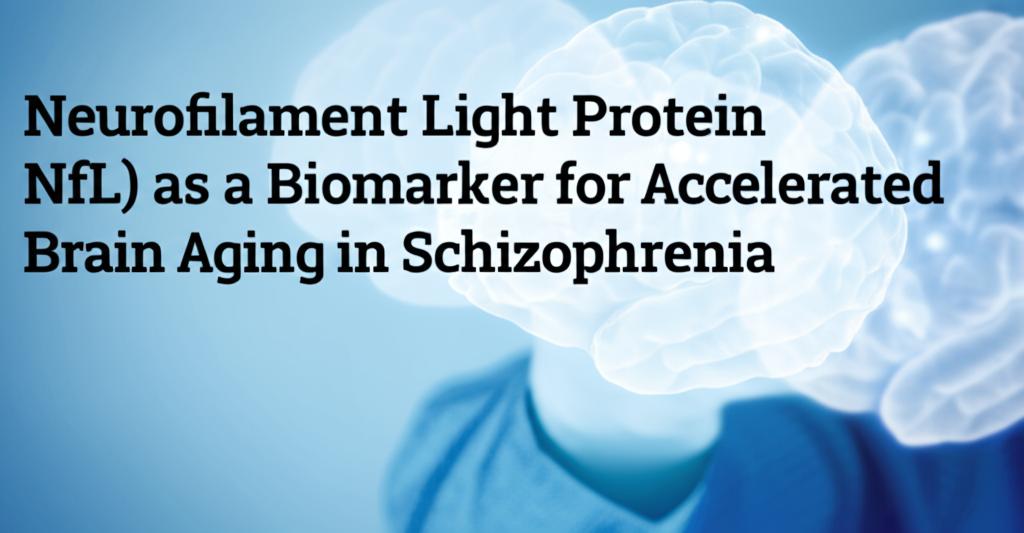Recent research highlights the potential of neurofilament light protein (NfL) as a key biomarker for understanding accelerated brain aging in individuals with schizophrenia. Schizophrenia, a complex mental disorder affecting millions globally, often emerges in adolescence or early adulthood. While traditionally seen as a neurodevelopmental condition, new evidence suggests that accelerated brain aging could significantly contribute to its development and progression.
NfL as a Window into Neuronal HealthNfL is a protein that forms part of the internal structure of neurons, helping to maintain their shape and size. When neurons are damaged or undergo neurodegeneration, NfL is released into the cerebrospinal fluid and subsequently into the bloodstream. Measuring NfL levels in the blood can therefore provide a relatively simple and minimally invasive way to assess neuronal injury. Elevated NfL levels have been associated with various neurological conditions, including Alzheimer's disease, Parkinson's disease, and multiple sclerosis. Importantly, NfL levels also naturally increase with age as the brain's repair mechanisms become less efficient.
Accelerated Brain Aging in SchizophreniaStudies have shown that individuals with schizophrenia may experience a faster rate of brain aging compared to healthy individuals. This is supported by findings from MRI scans calculating "brain age" and, more recently, by analyzing NfL levels. Research indicates that in people with schizophrenia, NfL levels appear to increase more rapidly with age than in healthy controls. This suggests an acceleration of the normal aging process within the brain. This accelerated increase in NfL was not observed in similar studies of individuals with bipolar disorder, pointing to a potentially specific link with schizophrenia.
Specifically, studies focusing on treatment-resistant schizophrenia (TRS) have found a positive correlation between age and NfL levels, further supporting the idea of accelerated brain aging in this population. One study noted that TRS individuals younger than 40 had significantly lower NfL levels compared to healthy controls, whereas those older than 40 had higher levels. These findings contribute to a growing body of evidence suggesting that schizophrenia-spectrum disorders are associated with accelerated brain aging.
How NfL Helps Understand SchizophreniaThe measurement of NfL offers a valuable tool for several reasons:
- Indicates Neuronal Injury: Elevated NfL levels directly point to damage or harm to neurons, which are crucial for communication within the nervous system.
- Tracks Disease Processes: Monitoring NfL levels over time could provide insights into the progression of neuronal damage in schizophrenia.
- Potential for Diagnosis and Monitoring: As a biomarker, NfL could aid in the diagnosis and ongoing monitoring of neurodegenerative aspects associated with schizophrenia.
- Distinguishing from Normal Aging: While some brain changes are part of normal aging (e.g., minor forgetfulness, slower reaction times), the changes seen in schizophrenia appear to be more severe and happen at a faster pace, indicating an older brain age than chronologically expected.
The link between NfL and accelerated brain aging in schizophrenia is an active area of research. While some studies show clear elevations of NfL in certain schizophrenia populations, particularly in acute phases or treatment-resistant cases, other research in early psychosis or among those at clinical high-risk for psychosis has not found significant differences in NfL levels compared to controls. These discrepancies highlight the complexity of schizophrenia and the need for further investigation across different stages and subtypes of the illness.
Researchers are also exploring the relationship between NfL and other biological markers, such as those for neuroinflammation (like TSPO) and other proteins related to neurodegeneration (like GFAP and pTau181). Understanding these complex interactions will be crucial for a comprehensive picture of brain health in schizophrenia.
Longitudinal studies are particularly important to confirm NfL's reliability in predicting disease progression, differentiating between psychiatric and neurodegenerative conditions, and assessing treatment responses in schizophrenia. The ongoing exploration of NfL and other biomarkers holds promise for improving our understanding of the biological underpinnings of schizophrenia and potentially leading to new diagnostic and therapeutic strategies focused on mitigating accelerated brain aging.

